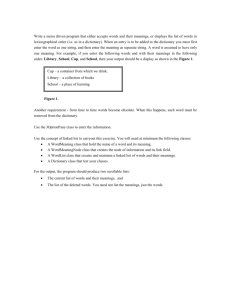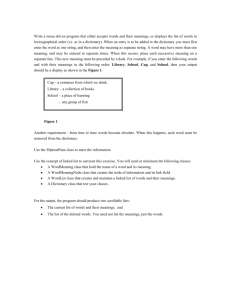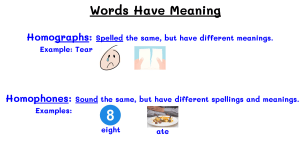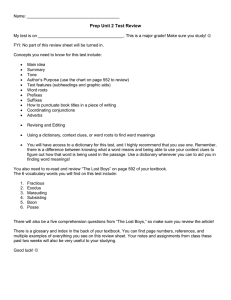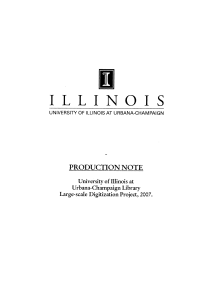Alonzo Handout 2Calderon-Pre-teaching-vocab-in-7-steps-14t2dhz-1 tcm18-228416
advertisement
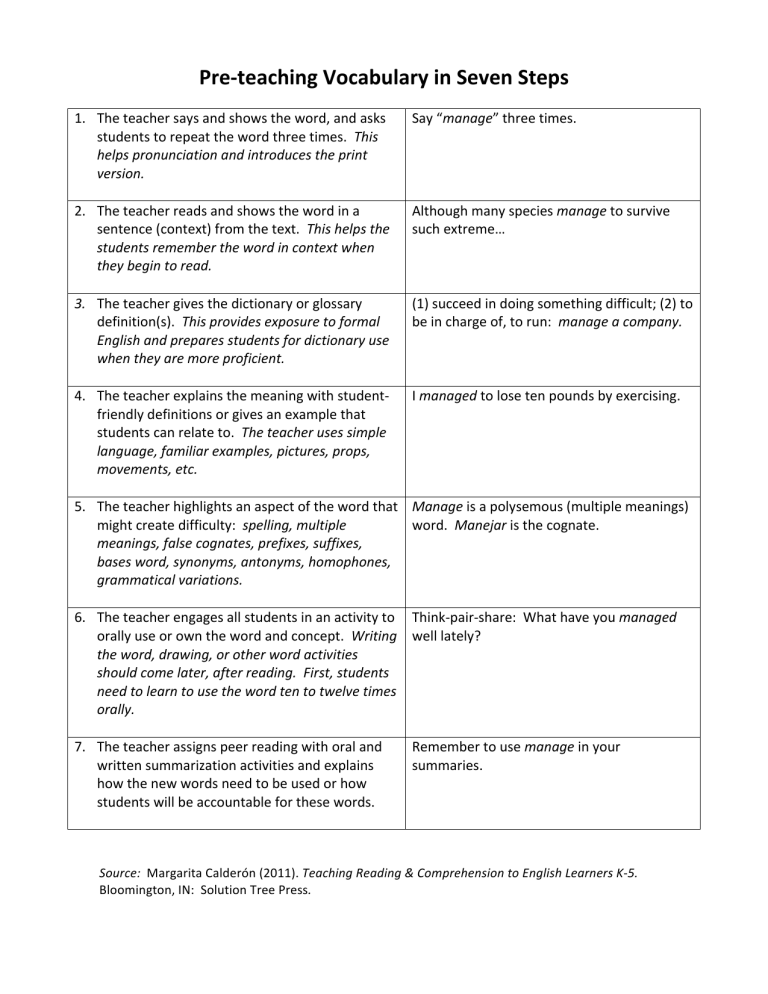
Pre‐teaching Vocabulary in Seven Steps 1. The teacher says and shows the word, and asks students to repeat the word three times. This helps pronunciation and introduces the print version. 2. The teacher reads and shows the word in a sentence (context) from the text. This helps the students remember the word in context when they begin to read. 3. The teacher gives the dictionary or glossary definition(s). This provides exposure to formal English and prepares students for dictionary use when they are more proficient. 4. The teacher explains the meaning with student‐ friendly definitions or gives an example that students can relate to. The teacher uses simple language, familiar examples, pictures, props, movements, etc. 5. The teacher highlights an aspect of the word that might create difficulty: spelling, multiple meanings, false cognates, prefixes, suffixes, bases word, synonyms, antonyms, homophones, grammatical variations. 6. The teacher engages all students in an activity to orally use or own the word and concept. Writing the word, drawing, or other word activities should come later, after reading. First, students need to learn to use the word ten to twelve times orally. 7. The teacher assigns peer reading with oral and written summarization activities and explains how the new words need to be used or how students will be accountable for these words. Say “manage” three times. Although many species manage to survive such extreme… (1) succeed in doing something difficult; (2) to be in charge of, to run: manage a company. I managed to lose ten pounds by exercising. Manage is a polysemous (multiple meanings) word. Manejar is the cognate. Think‐pair‐share: What have you managed well lately? Remember to use manage in your summaries. Source: Margarita Calderón (2011). Teaching Reading & Comprehension to English Learners K‐5. Bloomington, IN: Solution Tree Press.



